Seneca College HAS 321: Airport Baggage Handling JHA Assignment
VerifiedAdded on 2022/10/06
|10
|962
|13
Homework Assignment
AI Summary
This assignment presents a Job Hazard Analysis (JHA) for three key airport baggage handling activities: unloading baggage from a mobile carrier cart onto a conveyor, transporting baggage into the aircraft cargo compartment, and unloading and stowing baggage inside the aircraft. The JHA format, as specified in the assignment brief, requires identifying hazards associated with each task, along with the hazardous energy types and the necessary controls and barriers to prevent employee injuries or illnesses. The analysis considers various factors, including different times of day, weather conditions, and seasons. For each activity, at least five hazards and their corresponding controls are documented. The assignment emphasizes both actual and potential hazards, drawing from provided photos and encouraging the incorporation of engineering, administrative, and personal protective equipment (PPE) controls to ensure worker safety. The document provides a comprehensive overview of potential risks and mitigation strategies in airport baggage handling operations.
1 out of 10
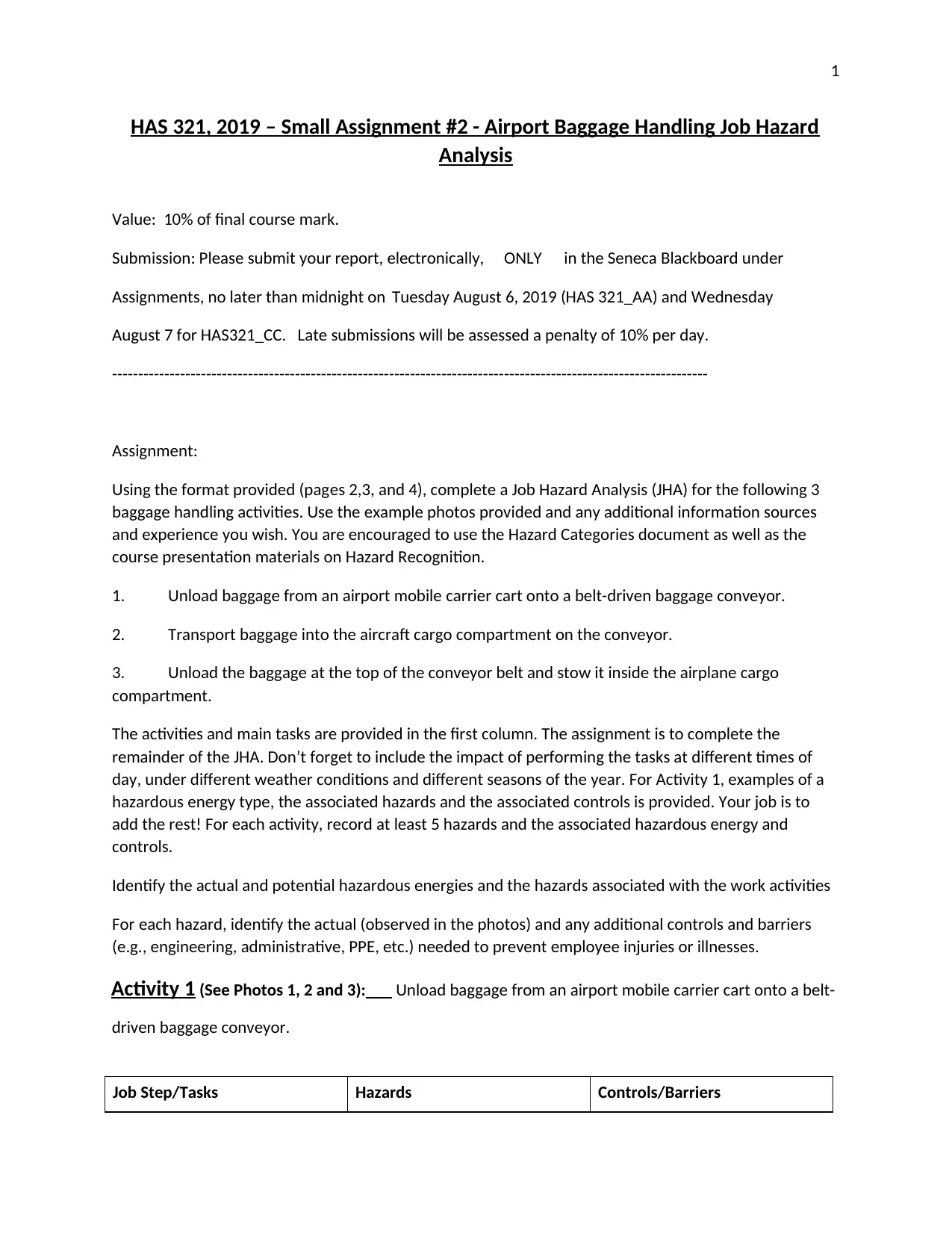
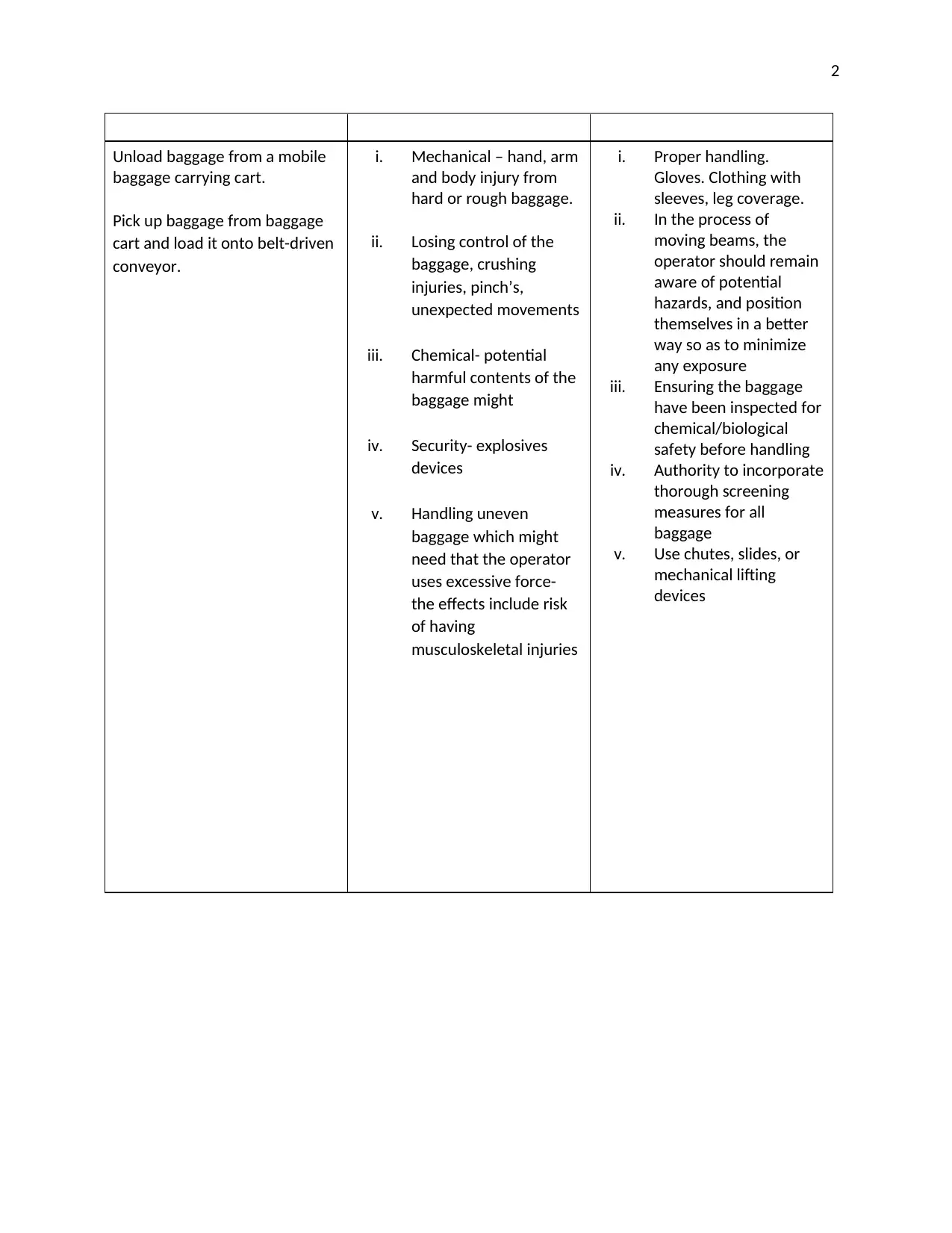
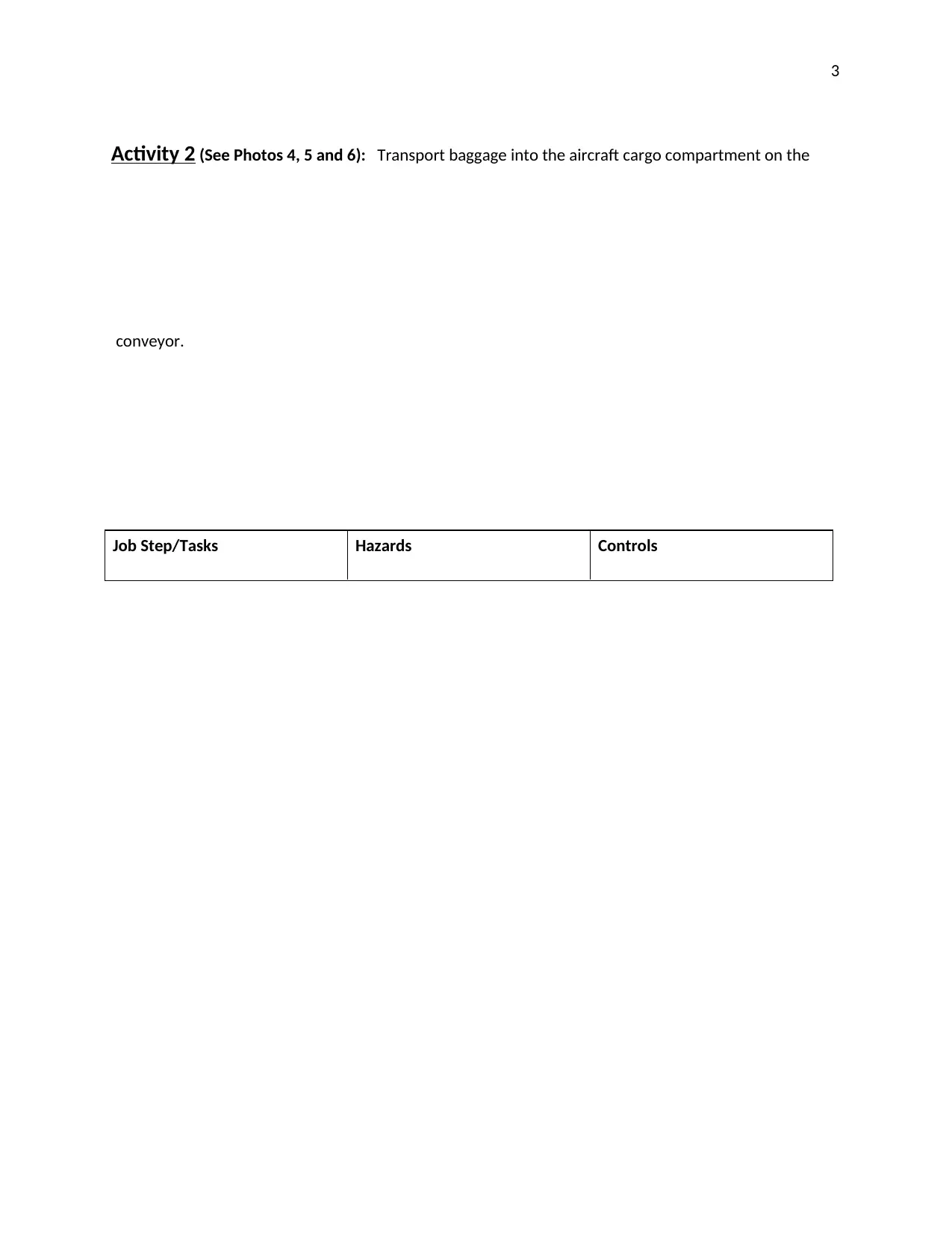

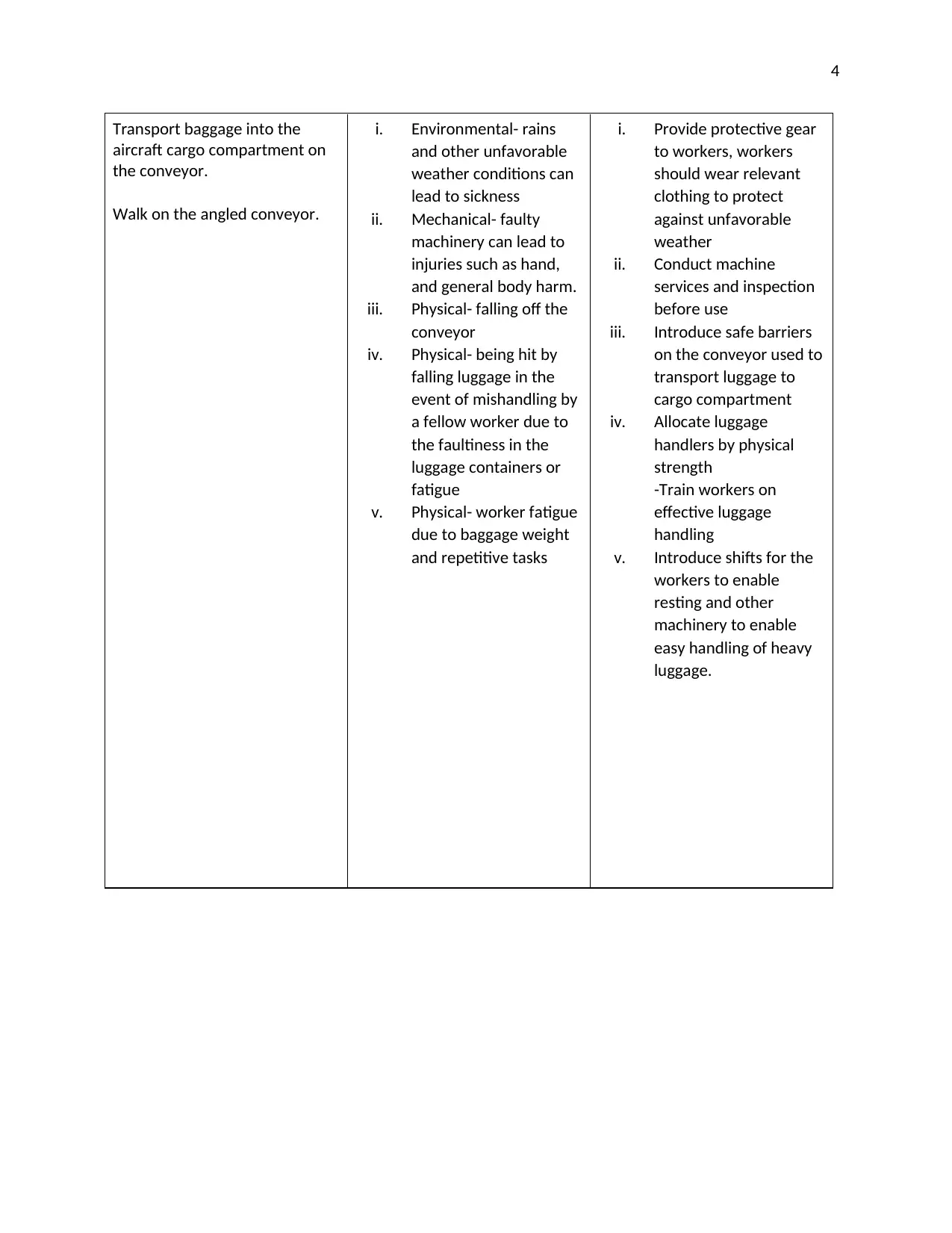
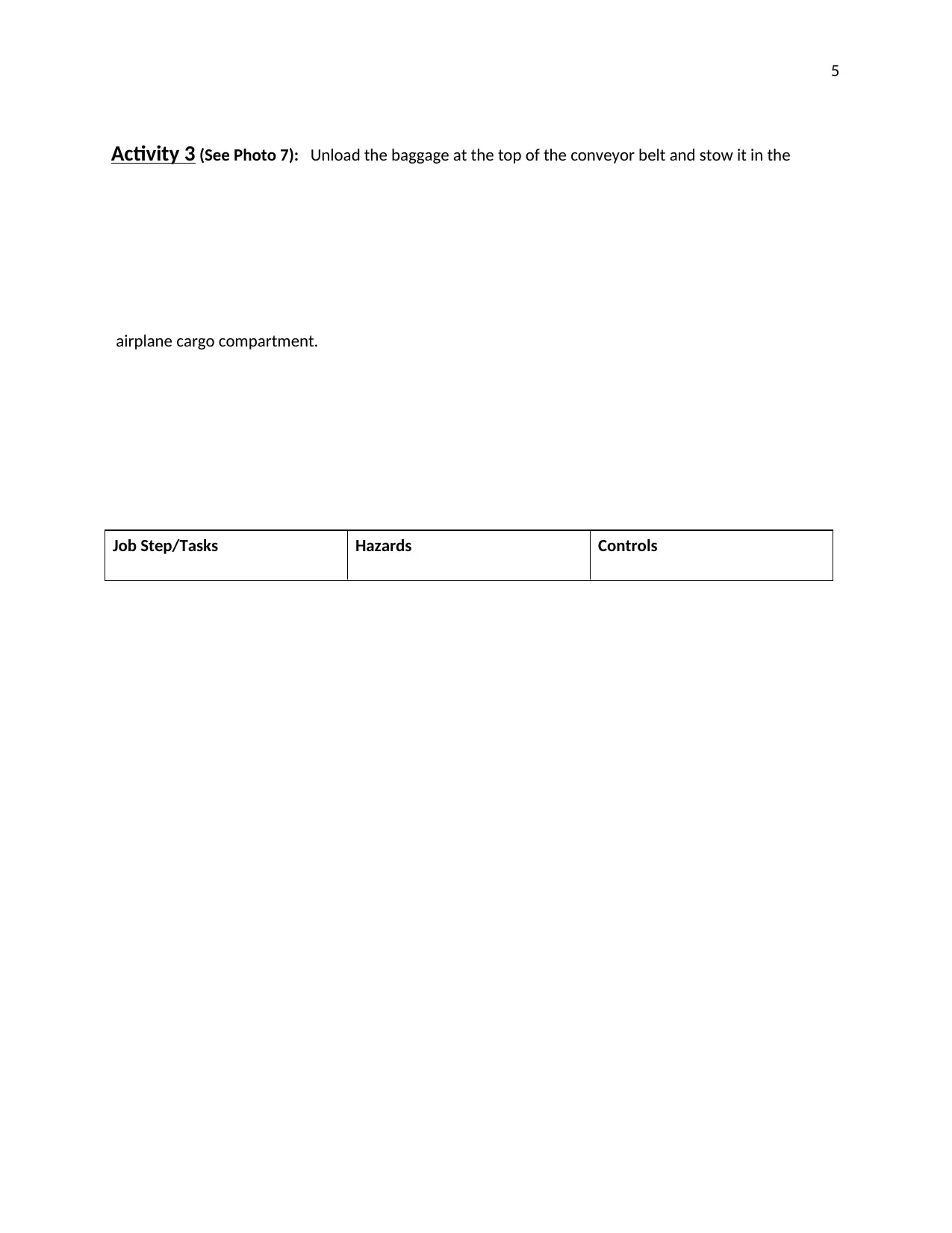
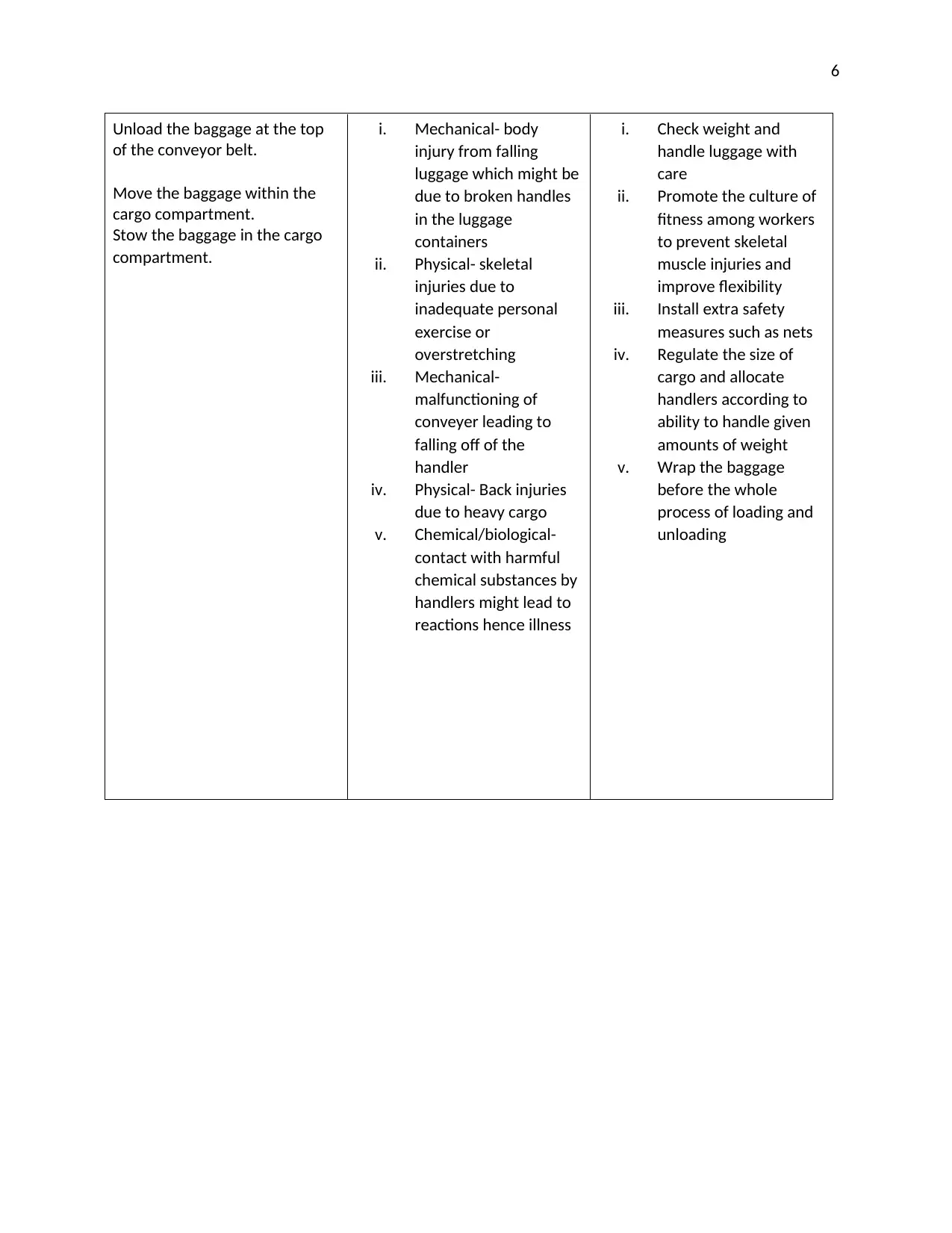
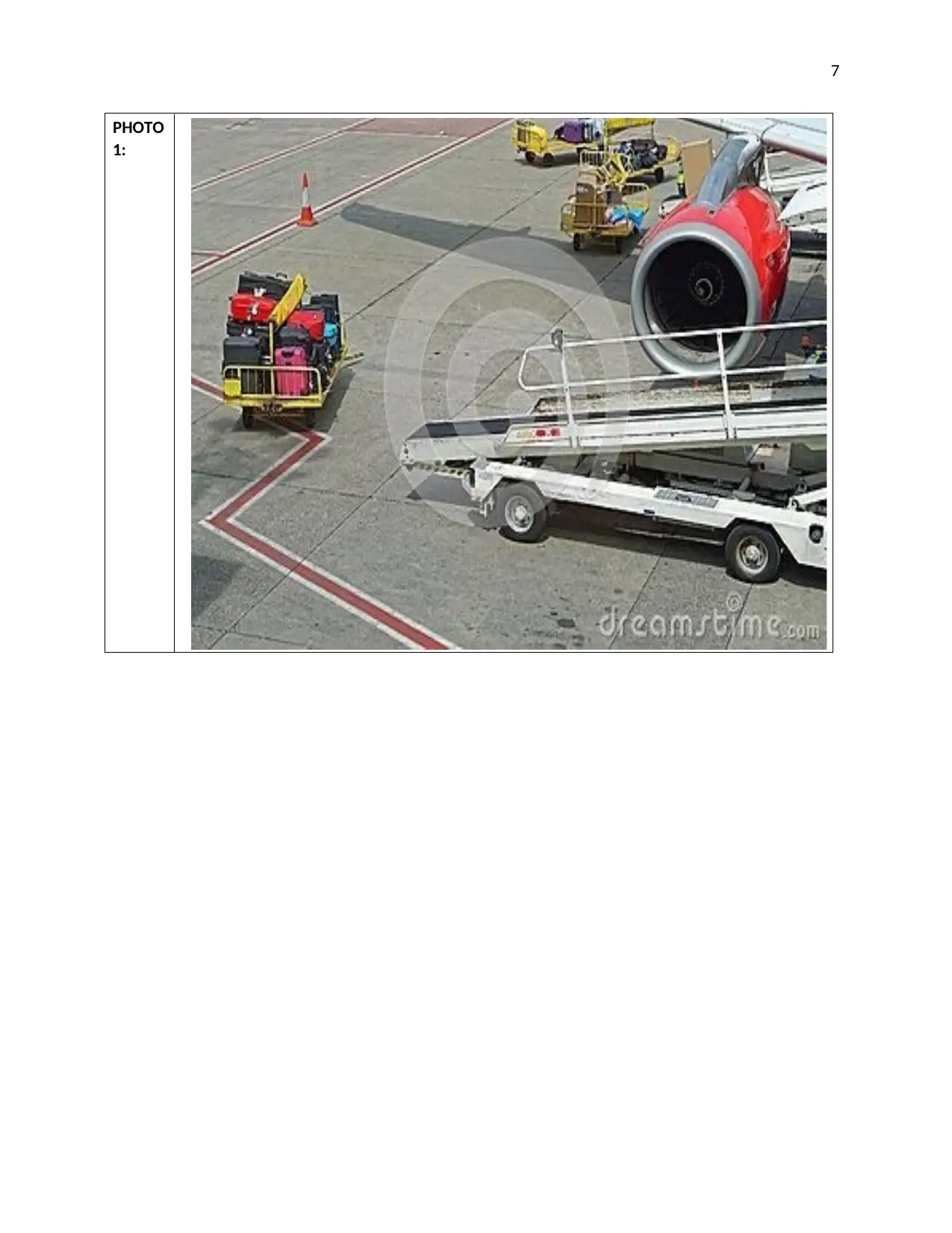
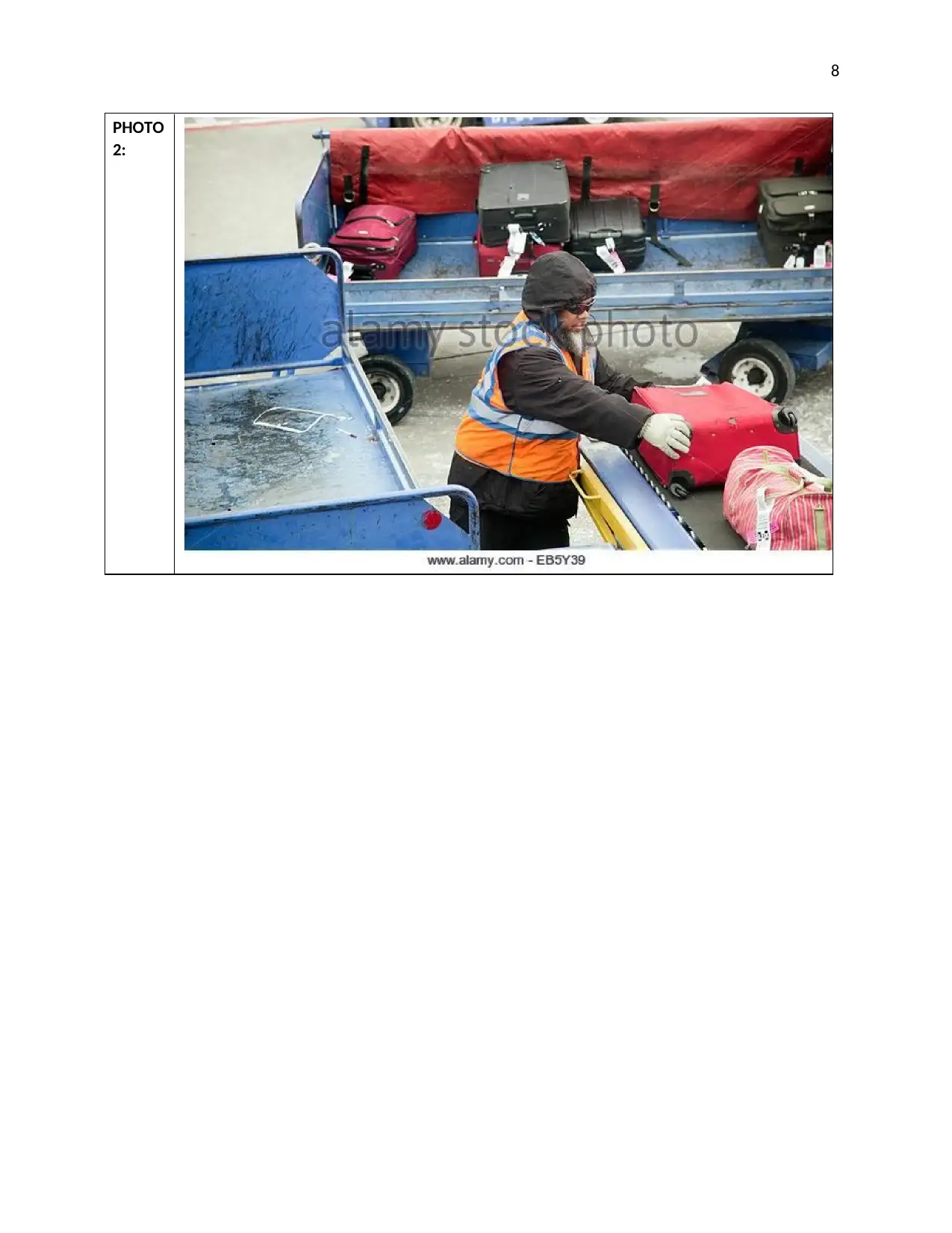
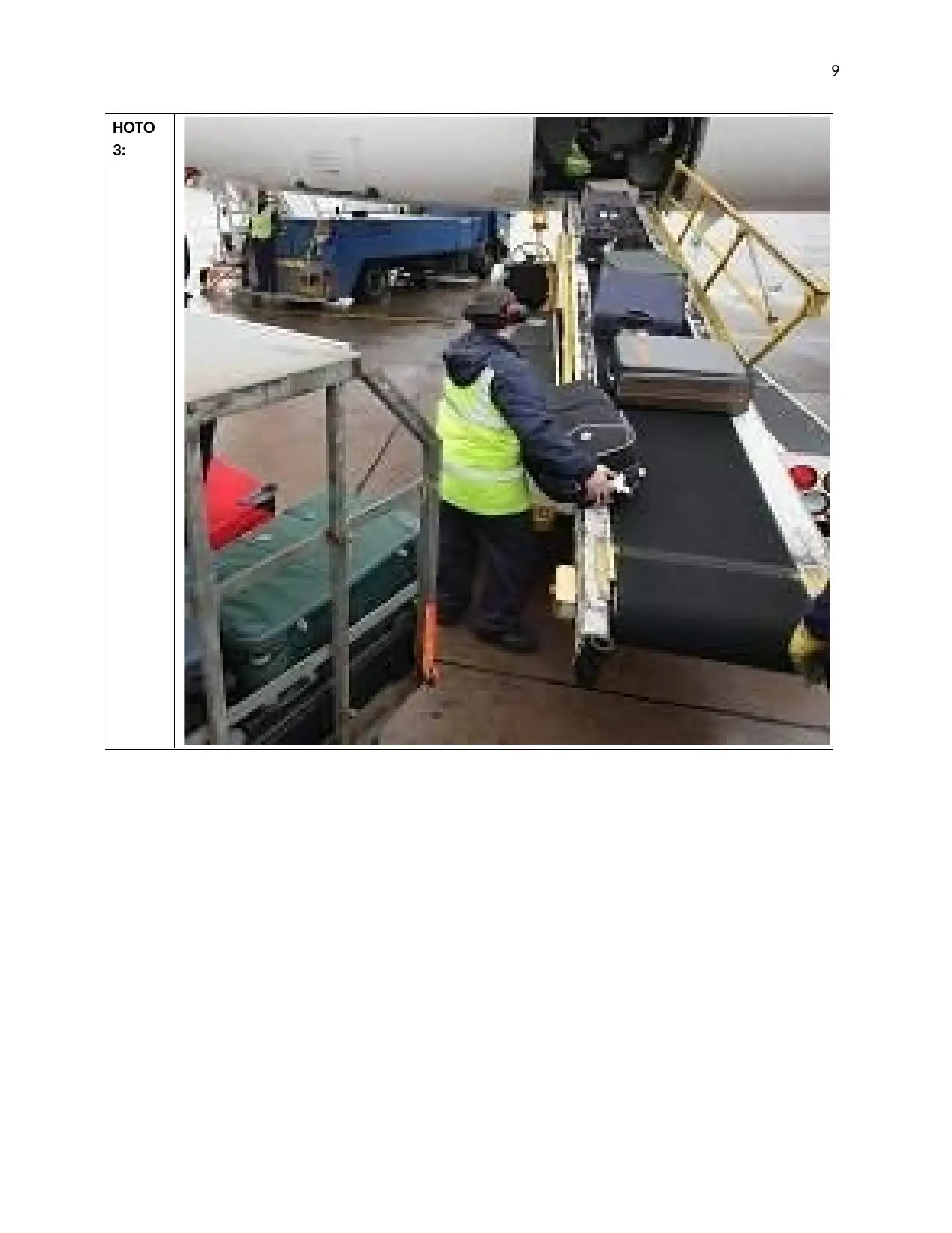
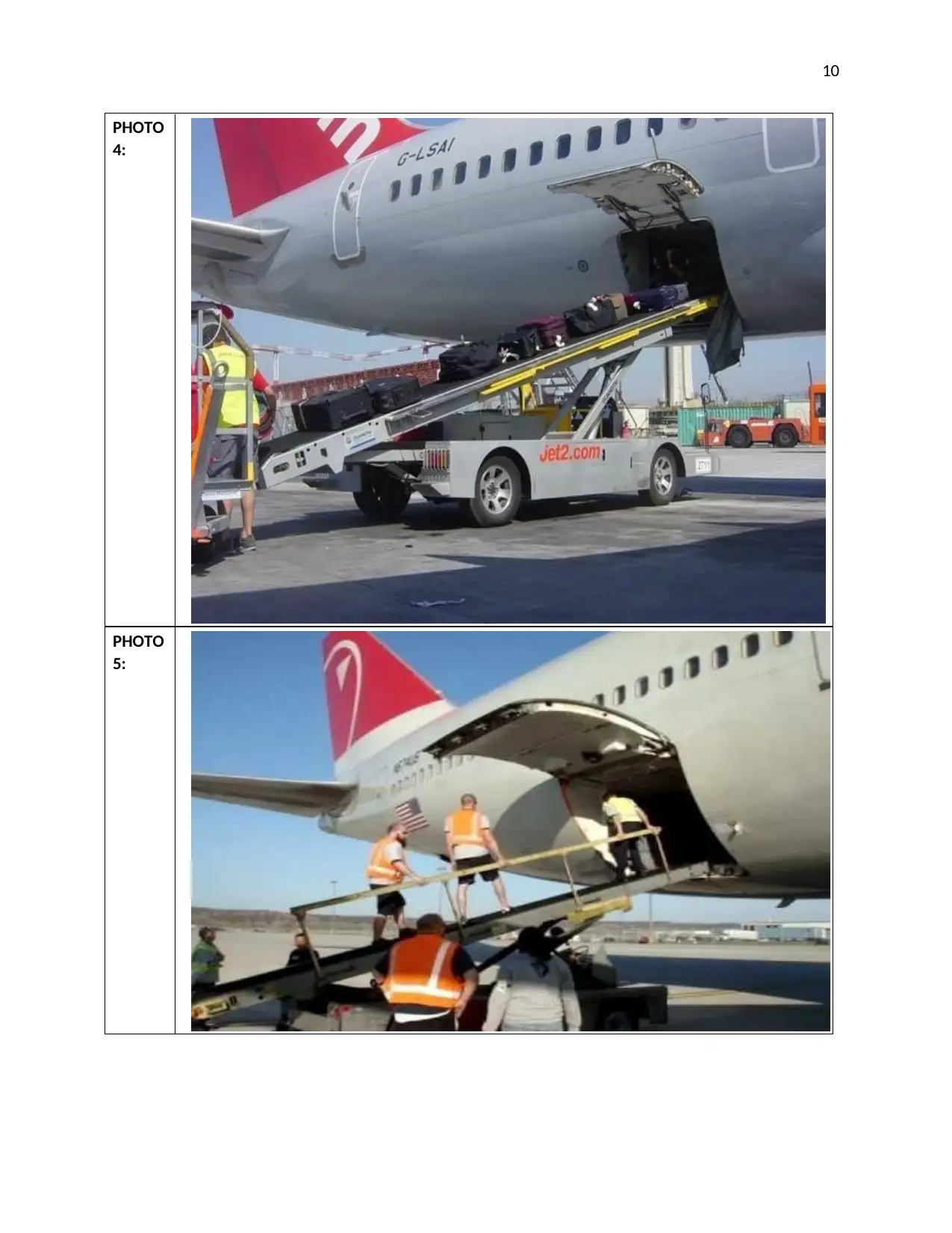
![[object Object]](/_next/static/media/star-bottom.7253800d.svg)